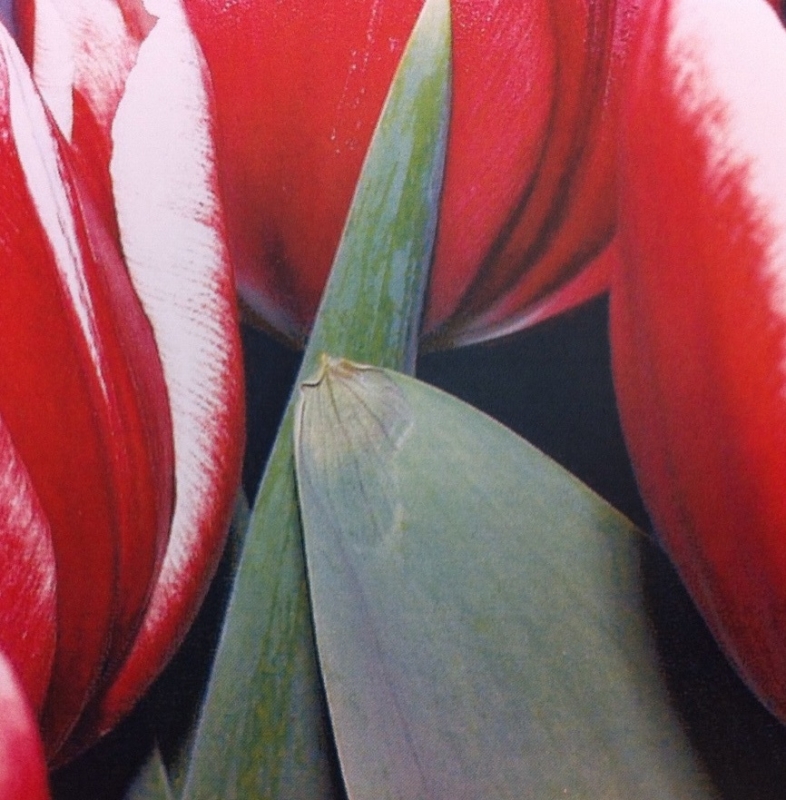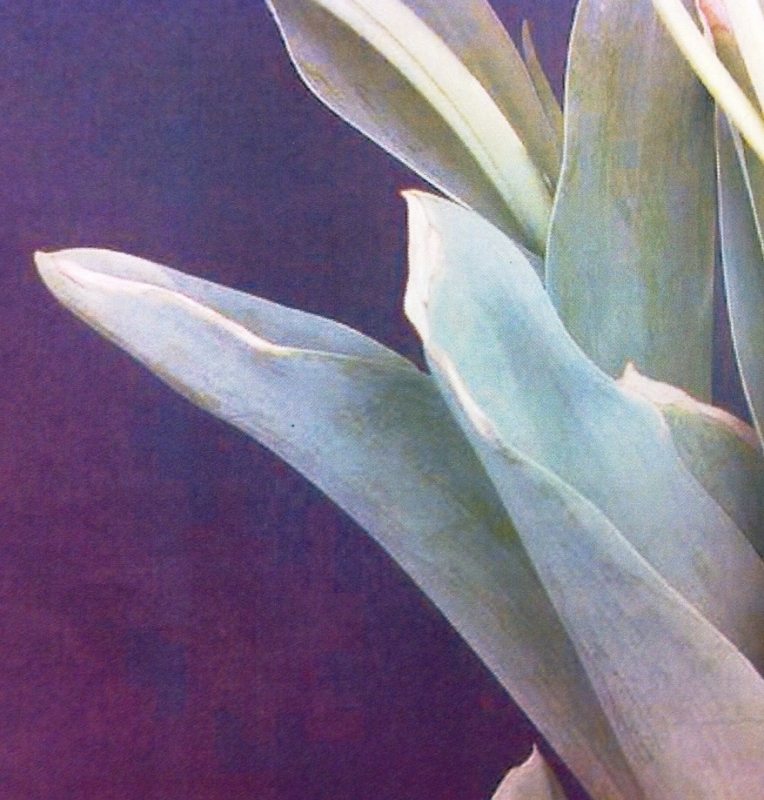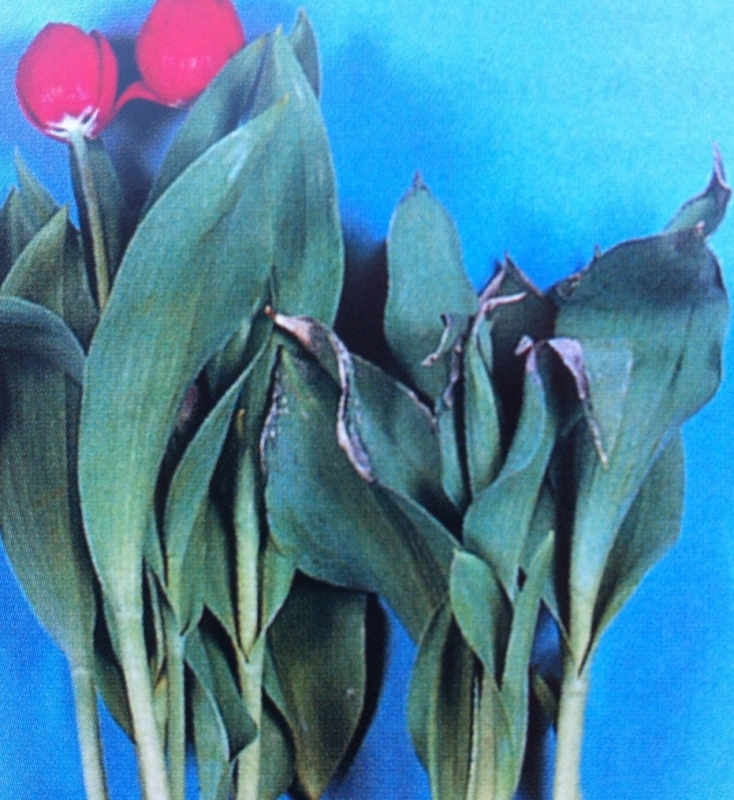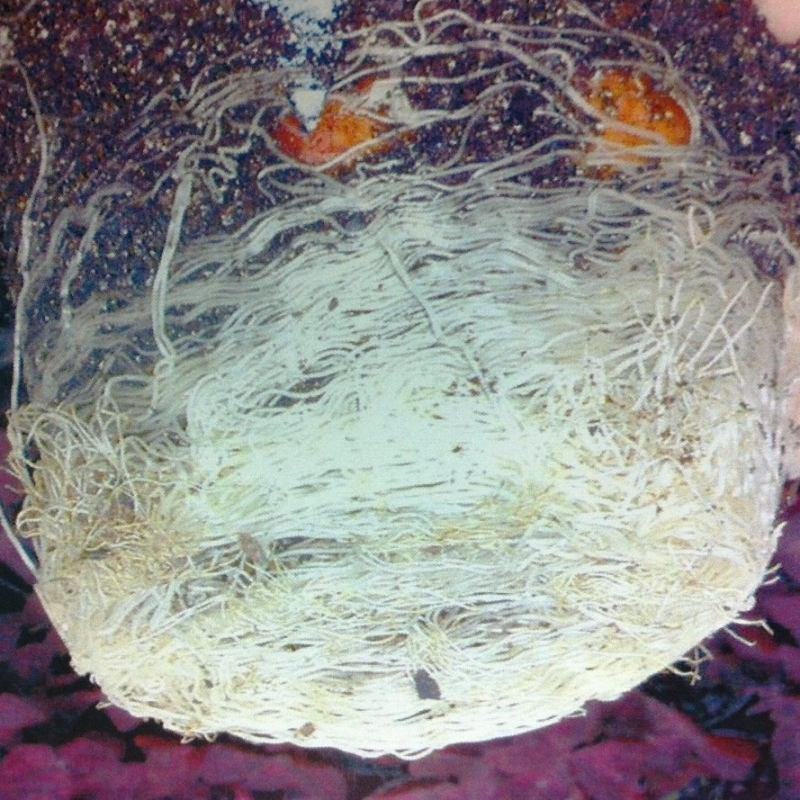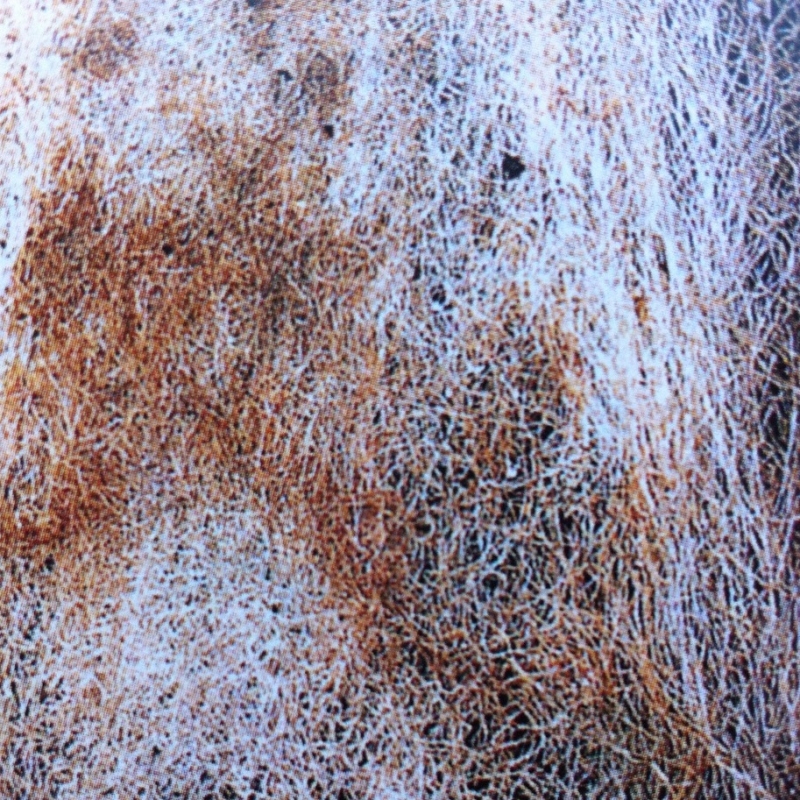Trichoderma in Tulips
Trichoderma in Tulips
In tulips, the symptoms of Trichoderma depend on the degree of attack. With a mild attack, plant growth is not reduced and plants flower well. In the case of a severe attack, plant growth is inhibited starting 7-10 days before flowering and the leaf tips begin to dry out, leading to a grayish-white injured area. These changes can occur very quickly, often within 24 hours. One or all of the plants in a pot may show the symptoms above. If you knock the plant out of the pot, the root ball will be very heavy, with the root mass pushing soil away, so there is no contact of the root ball with the planting mix. This soil-less layer of roots will appear to be rotten, glassy, off-white to pinkish and will feel slippery. Often, a white mat of fungal mycelium can be seen on the roots. Cultivars differ in their sensitivity to Trichoderma. ‘Kees Nelis’, ‘Angelique’, and ‘Prominence’ are susceptible and readily show symptoms when infected. ‘Monte Carlo’ is reported to be susceptible to fungal infection, yet does not show visible symptoms as readily.Not all Trichoderma are created equal!
Many growers are familiar with the Trichoderma species that are used as biological control agents, in products such as RootShield or PlantShield. The Trichoderma that infects tulips, Trichoderma viride, is a totally different organism, and is not present in the commercial products on the market. Trichoderma is suspected to be a ubiquitous organism (that is, it is found everywhere in horticulture), but is probably most commonly introduced into the tulip forcing system through the peat moss used in the growing substrate. It can be assumed that any peat-containing mix will have spores of the pathogen. Trichoderma is a very mild pathogen, and the plant must be in a weakened and/or stressed condition for infection to occur. Trichoderma is most commonly seen on tulips that simply have too many roots. As mentioned above, on very heavily-rooted plants, there is a matted layer of roots with essentially no soil particles on them. If the plant dries out a bit, there is little protection for these roots. Once weakened from this drying-out (perhaps involvingan increase in root-zone soluble salt concentration, depending on the nutrient status of the soil), the Trichoderma fungus is able to attack and colonize the roots. Trichderma is a disease that only shows symptoms in the greenhouse. It will not occur in the cooler, because the roots are not damaged (as a result of drying out, high temperatures, etc.) yet. There are many places and steps in bulb handling where you can fight Trichoderma; they are reviewed below.
Prevention: Planting
To prevent Trichoderma, steps should be taken before, during and after planting. Before planting, thoroughly clean all previously used crates and shuttle trays, removing all soil remnants. Treatment of forcing boxes with a surface sterilant, such as Greenshield, is also recommended. Our experience with Trichoderma at Cornell suggests that growers
consistently experiencing Trichoderma should review their sanitation procedures and consider careful cleaning of their forcing crates, rooting rooms and bulb handling areas. If growing cut flowers, place a 1/2” layer of coarse sand on the bottom of the forcing tray before planting. While the exact reason this is helpful is unknown, it may involve maintaining some contact of substrate and the root mass on the bottom of the crate. This technique is probably not practical for potted tulips.
Prevention: Rooting Room Management
An old (but still valid) concept for Trichoderma management is to limit excessive root growth in the forcing crate or pot. One way to do this is to add about 20% of “river sand” (coarse, salt-free sand) to the planting mix. While this increases weight slightly, it reduced the water holding capacity of the mix, and helps to reduce root growth. It will also reduce “lifting-up” of the bulbs, which can sometimes happen. At Cornell, we have been experimenting with planting tulips in moist planting mix, and not watering-in heavily after planting. Our idea is that root growth is directly proportional to the amount of water available to the bulb. This idea has proven true: we have had good success in limiting root growth in drier soils, without visible reductions in plant quality at harvest. We can conclude that total soaking of the soil mass is not desirable, or needed. This technique is common in North America, but not in The Netherlands. A key reason might be the quality and operation of our rooting rooms. In North America, we commonly use equipment that is probably better suited for beer, than bulb, cooling. The coils of these coolers are designed differently than optimal for bulb cooling, and often the fans in the cooler run constantly. This causes the soil to dry out more quickly. This point should be considered in any alteration to your planting and watering procedures. Another simple solution might to alter the settings of the controls so that the fans run only when cooling is required by the thermostat. Unlike warm storage before planting, only minimal airflow is needed for planted bulbs below 9C. Similarly, rooting room temperature regimes might be re-thought. Normally, temperatures are dropped gradually (over a 4-5 week period) from 9C to 1C as the roots develop. Possibly, it would be better to rapidly (one to several days) reduce rooting room temperature after the plants have rooted. Lower temperatures will reduce overallroot growth during the cooling period, and should help in reducing Trichoderma problems.
Prevention:Greenhouse
In the greenhouse, it is important to avoid root stress, especially in the form of drying-out of the medium and roots. A well-drained planting mix is important, as is maintaining soluble salts at a low level. (<1.5 mmho/cm on a saturated paste extract)
To this end, proper watering is critical, and the bottom of the root ball and lower roots should never dry out. Be wary, however, that over-watering is bad as well, and contributes to a different problem, namely Pythium. Also, Botrytis and Fusarium culmorun can also cause a similar leaf-tip desiccation that looks very much like Trichoderma. Studies in Holland showed that plants grown on a solid surface where roots could grow out of the pot and continue growth between the bottom of the pot and the bench surface were especially susceptible to infection. If forcing cut flowers, place crates on 1- 2” diameter pipes to elevate crates above the floor. Similar precautions should be taken if growing on substantially closed benches.
Contact information: wbm8@cornell.edu. Thanks are expressed to the Dutch Exporters’ Association for Flowerbulbs and Nursery Stock for financial and material assistance with aspects of some of the research reported herein.
